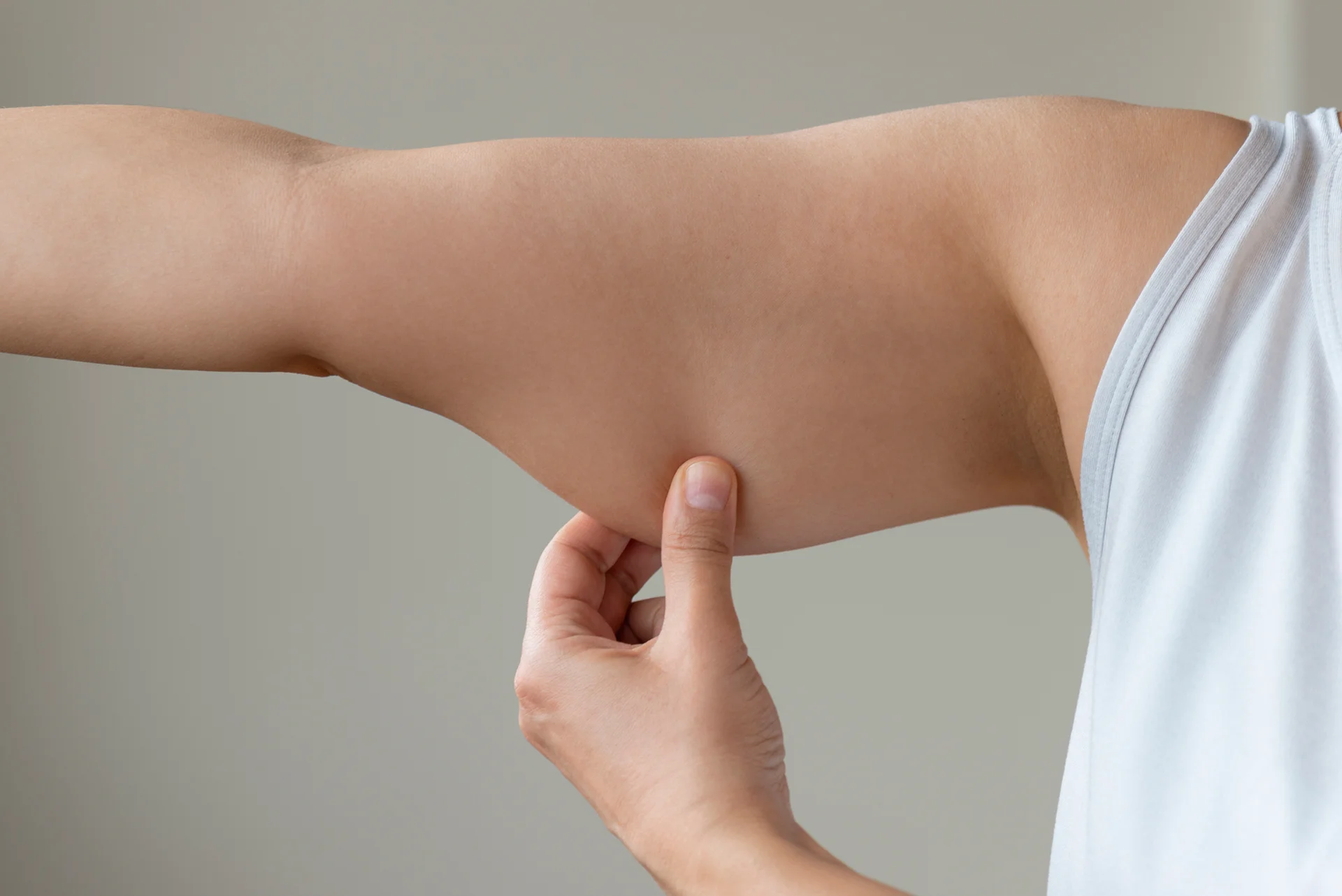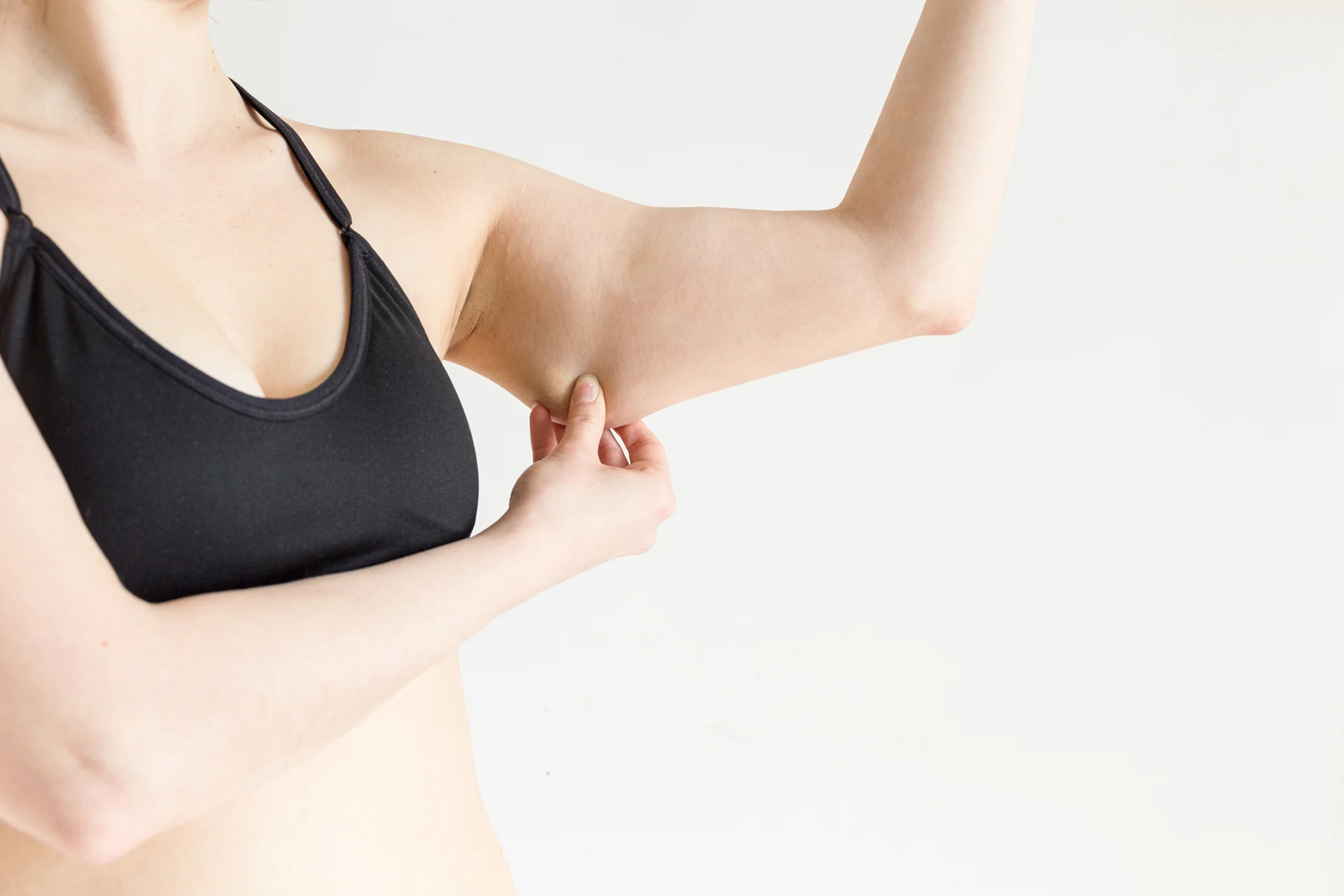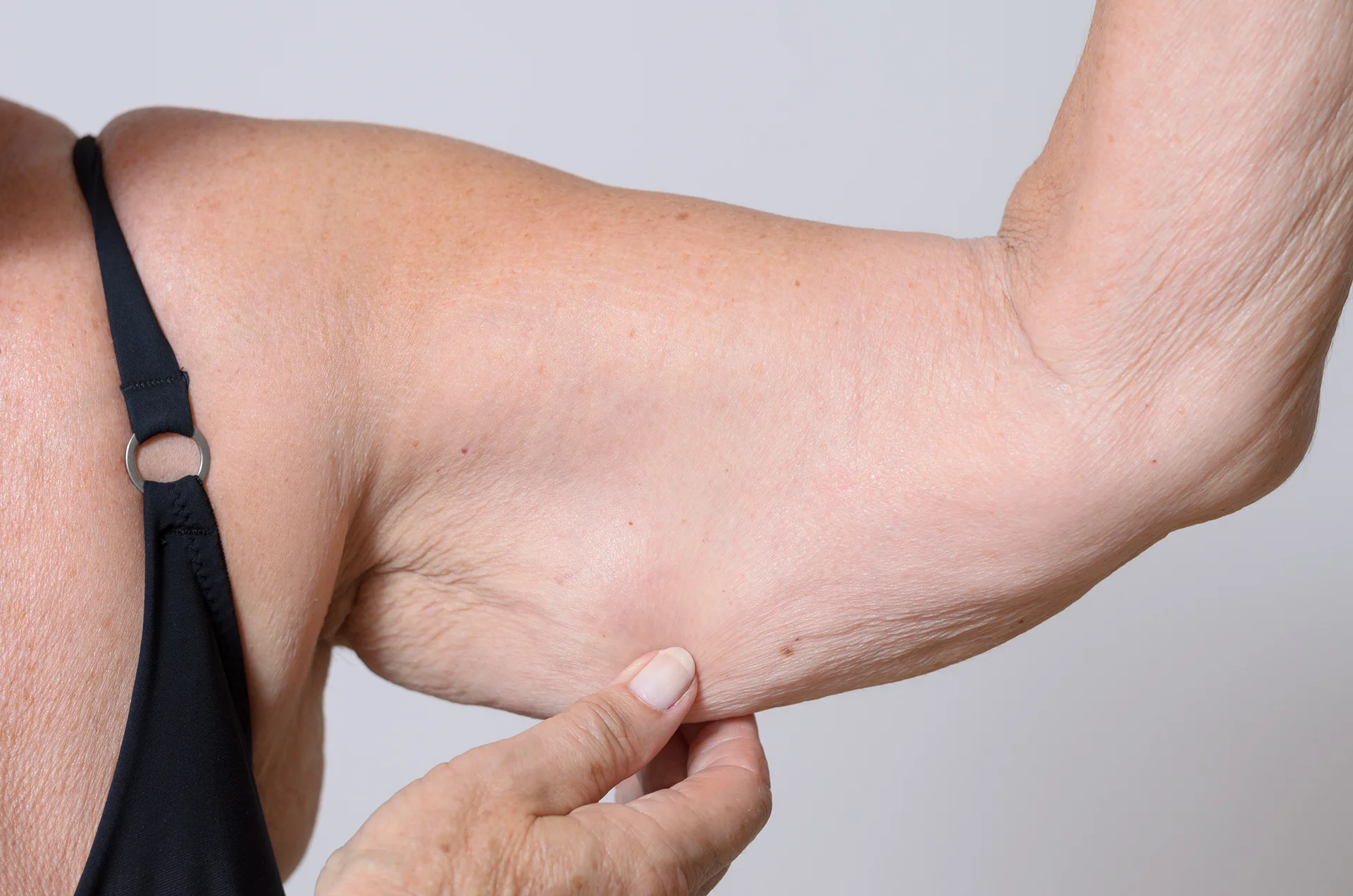Considering brachioplasty, also known as an arm lift? If so, concerns about scarring are likely at the top of your mind.
During this procedure, plastic surgeons remove excess skin and fat from the upper arms to create a more toned, contoured appearance. But like any surgical procedure, scars are an inevitable result.
While some degree of scarring is unavoidable, there are steps you can take before and after surgery to reduce the appearance of brachioplasty scars. Let’s take a look at the techniques and best practices for minimizing scarring after brachioplasty.
Tired of loose arm skin? Dr. Darren M. Smith’s non-invasive arm treatments are your solution to confidence!
What Exactly is Brachioplasty, and Why Does It Lead to Scarring?
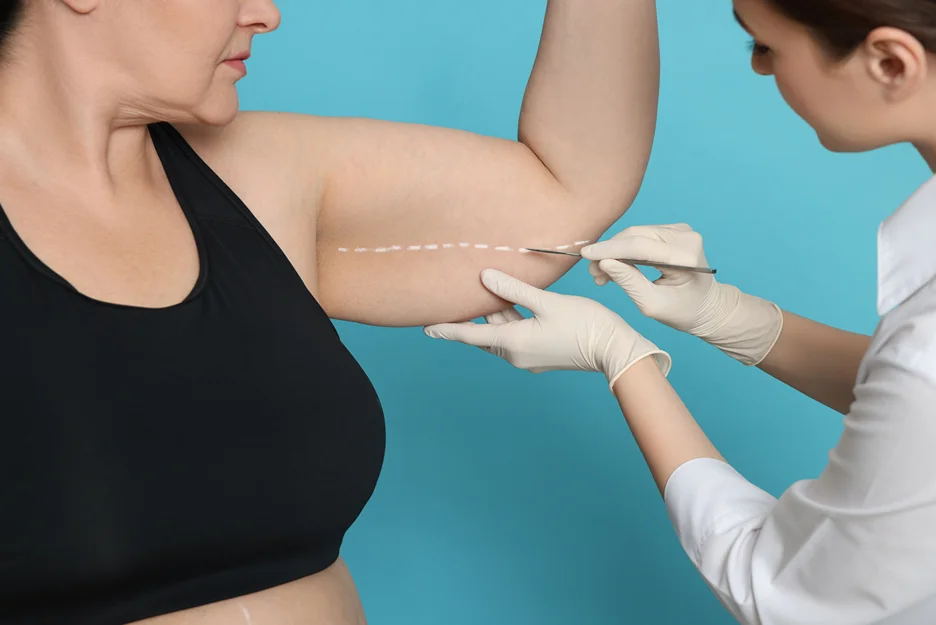
Brachioplasty surgically removes loose, sagging skin that causes the upper arms to appear flabby. There are a few different brachioplasty techniques:
- Standard brachioplasty makes an incision from the armpit to the elbow to remove excess skin and fat. This leaves a visible scar along the inner arm.
- Minimally invasive brachioplasty uses liposuction to remove fat through small incisions, followed by a shorter scar to remove excess skin.
- Medial arm lift places the scar on the underside of the arm to make it less visible.
Due to the nature of the surgical procedure, which requires incisions, some degree of scarring is inevitable in all types of brachioplasty.
The extent and visibility of the scar depend on the technique used and individual healing factors. But plastic surgeons like Dr. Smith use advanced techniques to minimize the appearance of scars.
How Do Plastic Surgeons Minimize Brachioplasty Scarring During Surgery?
There are a few surgical strategies to reduce brachioplasty scarring:
- Careful incision placement: The incision location will determine scar visibility. Placing the incision on the underside of the arm hides it better.
- Minimally invasive techniques: Procedures like mini-brachioplasty and laser-assisted liposuction use smaller incisions that lead to less scarring.
- Tissue handling methods: Gentle tissue handling and minimal trauma reduce inflammation and scarring. Closely re-approximating the tissue layers also minimizes tension.
- Precise suturing methods: Specialized suturing approaches like buried and absorbable sutures promote discreet scarring.
Optimizing Healing and Minimizing Scars in Brachioplasty
Pre-Surgery Preparation: Laying the Foundation for Optimal Healing
- Cease Smoking: Stop smoking at least 6 weeks before and after the surgery. Smoking impairs healing and exacerbates scarring.
- Nutrition Boost: Incorporate antioxidant and vitamin C-rich foods into your diet. These nutrients support collagen production, essential for effective healing.
- Medication Management: Consult with your doctor to review and possibly adjust medications. Avoid blood thinners, NSAIDs, and other drugs that can impair healing processes.
- Reducing Sodium Intake: Lower sodium intake before surgery. This can help decrease swelling at the incision site post-surgery, potentially reducing scar severity.
- Maintain Hygiene: Keep the incision area clean with antibacterial solutions both before and after surgery to reduce infection risks, which can worsen scarring.
Post-Operative Care: Ensuring Graceful Healing and Scar Management
- Compression Garments: Use compression sleeves as advised to minimize swelling and prevent the formation of thick, raised scars.
- Scar Massage: Once the incisions have healed, gentle massage can help soften and flatten the scar.
- Silicone Sheeting: Apply silicone sheets to hydrate scars, making them smoother and less pronounced.
- Activity Restrictions: Follow all activity restrictions to avoid straining or stretching the arms, preventing the widening of scars.
- Sun Protection: Protect scars from sun exposure, which can darken them. Use a minimum SPF 30 on the incision areas.
- Moisturization: Regularly apply products containing vitamins C and E to keep the scars hydrated, enhancing their appearance over time.
By meticulously following these pre-surgery and post-operative guidelines, patients can significantly improve their healing process and reduce the visibility of scars following a brachioplasty.
This holistic approach ensures the best possible aesthetic outcome, aligning with the goals of both the patient and the surgical team.
What Treatment Options Reduce the Appearance of Existing Scars?
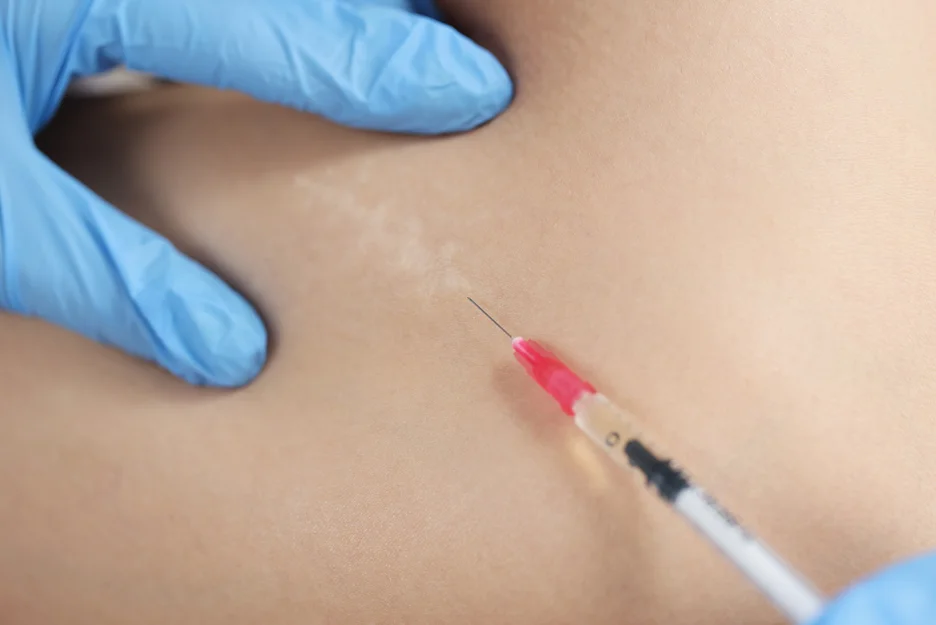
For patients troubled by visible brachioplasty scarring, there are several effective scar treatment options, such as:
- Silicone Gels or Sheets: Widely used for over 35 years, these are effective for new scars, with silicone gel also offering a convenient option. They are known to improve scar appearance and texture.
- Corticosteroid Injections: These injections target thick or keloid scars, reducing itching, redness, and discomfort. However, they are not suitable for flat scars due to the risk of causing indentations.
- Laser Scar Revision: This method uses targeted light pulses to reduce redness, flatten scars, and alleviate pain and itchiness. While it can’t completely remove scars, it significantly improves their appearance.
- Chemical Peels: Chemical peels work by removing the top skin layer, promoting cell turnover and leading to a smoother complexion. They are particularly effective for mild scars.
- Microneedling: This technique involves creating microchannels in the skin, stimulating collagen production. It helps restructure the skin and diminishes the appearance of scars.
- Prescription Medicated Creams: Depending on the scar type, a doctor may prescribe creams with retinoids or topical steroids, addressing itching and swelling.
- Over-The-Counter (OTC) Creams: These creams, though less potent than prescription options, aim to reduce scar size and appearance, addressing redness and itchiness.
- Natural Remedies: Some natural remedies, like baking soda, have shown potential in scar reduction, offering a more holistic approach.
Discuss all scar treatment options with your doctor to determine the best route for your individual needs and goals.
Ready for sleeker, more toned arms? Explore non-invasive arm contouring services with Dr. Darren M. Smith!
What Are Realistic Expectations When It Comes to Brachioplasty Scars?
While minimizing scarring is a priority, patients need realistic expectations about brachioplasty procedures.
Techniques have improved, but scars are still inevitable with arm lift surgery. However, scars do continue fading over the first 12-18 months post-surgery.
Location also plays a big role. Scars on the underside of the arm will be far less visible than those on the back of the arm.
Arm position affects visibility as well. Patients should realize some degree of scarring is a trade-off for the aesthetic improvement gained from brachioplasty.
Are Scarless Brachioplasty Procedures On the Horizon?
Advancements in technology are indeed leading to less invasive brachioplasty techniques that aim to minimize scarring. Here’s an overview of these emerging methods:
- Limited-Incision Brachioplasty (Invisible Arm Lift or “C” Brachioplasty):
- Procedure: Involves a curved incision, typically hidden in the armpit area.
- Technique: Following liposuction to reduce arm fat, excess skin is removed, and the remaining skin is repositioned towards the armpit. This approach results in less visible scarring.
- VASER Liposuction and Cool Helium Plasma Skin Tightening:
- Combination Technology: Utilizes VASER liposuction alongside Cool Helium Plasma technology.
- Outcome: Offers effective arm contouring by tightening the skin and reducing fat, circumventing the need for traditional brachioplasty incisions, thus minimizing scarring.
- BodyTite Scarless Arm Lift Procedure:
- Technology: Employs radiofrequency energy to tighten skin and reduce fat.
- Advantage: This method promises to achieve arm lifting results without the scarring typically associated with traditional brachioplasty.
Each of these techniques represents a significant step forward in cosmetic surgery, providing patients with more options for arm contouring with reduced scarring.
As these technologies develop and become more widely available, they could offer effective alternatives to traditional brachioplasty, especially for patients concerned about scarring.
As always, it’s important for individuals considering these procedures to consult with qualified plastic surgeons to understand the best options for their specific needs and to discuss the potential risks and benefits of each technique.
Final Thoughts
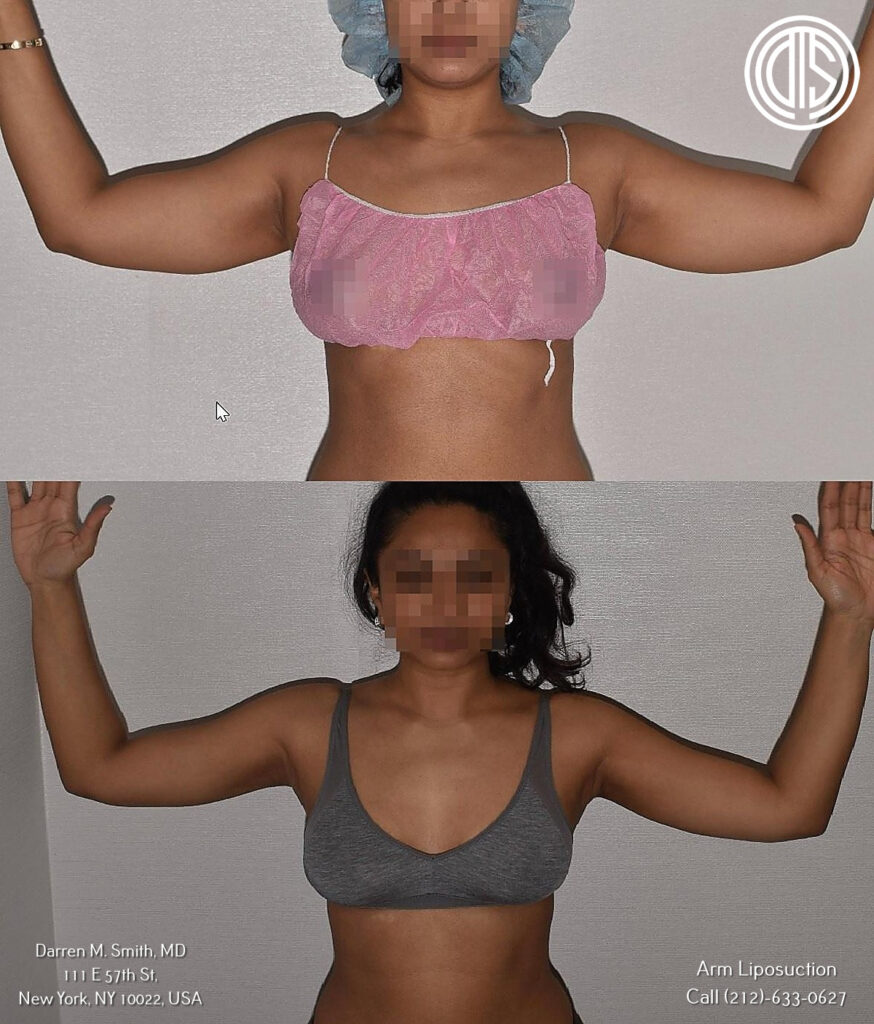
Scarring is a common concern among brachioplasty candidates. But patients can take comfort in knowing there are many effective techniques for preventing and minimizing brachioplasty scars, both during surgery and post-operatively.
By selecting an experienced, board-certified plastic surgeon and following all pre- and post-operative protocols, most patients are delighted with their nearly imperceptible brachioplasty scars and improved upper arm contours.
Get the toned arms you’ve always wanted with Dr. Darren M. Smith’s innovative contouring treatments. Book your session today!

